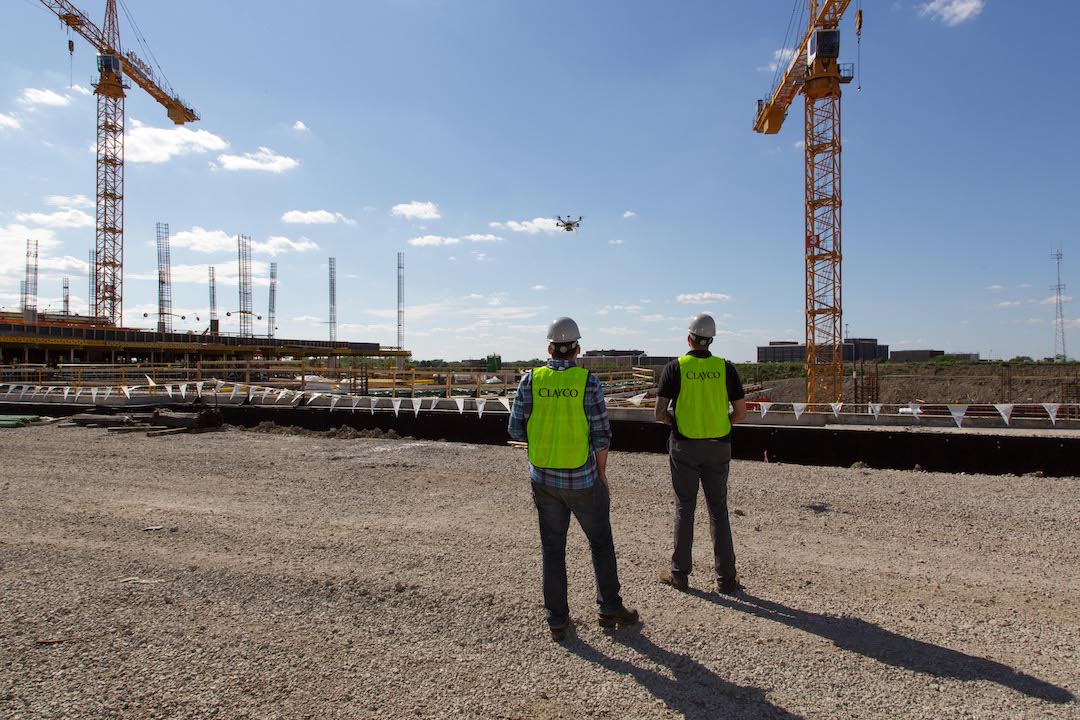Clayco’s CEO and Chairman Bob Clark sees innovation as being at the center of what his firm does. It was one of the first GCs to use full-room computers, an IBM 3600 “that looked like a giant refrigerator,” he recalls. It was an early adopter of spreadsheet technology, using Prolog’s project management software.
In 2005, it started a full-service concrete subcontracting business that now has 1,000 employees and produces four million sf of concrete walls per year. Clayco was the first construction company to receive an FAA license to fly small unmanned aerial vehicles. In 2015, it launched Uplift Data Partners, a turnkey construction and real estate inspection service that uses drones. (It sold that business to PrecisionHawk.)
Clayco’s interest in drones led it to start Treehouse Adventures, a venture-capital entity that focuses on construction. Its investments include Ventana, a high-performance curtain wall fabricator and installer; and Drawn, a design group.
In 1993, Clayco formed its Mission Control team to bring project management out into the field. Mission Control started with a dozen people and now has one team member for every three project managers in the field. And the company’s “paradigm shift toward greater jobsite safety,” says Clark, got it involved recently in hard hat design with the Savannah (Ga.) College of Arts and Design.
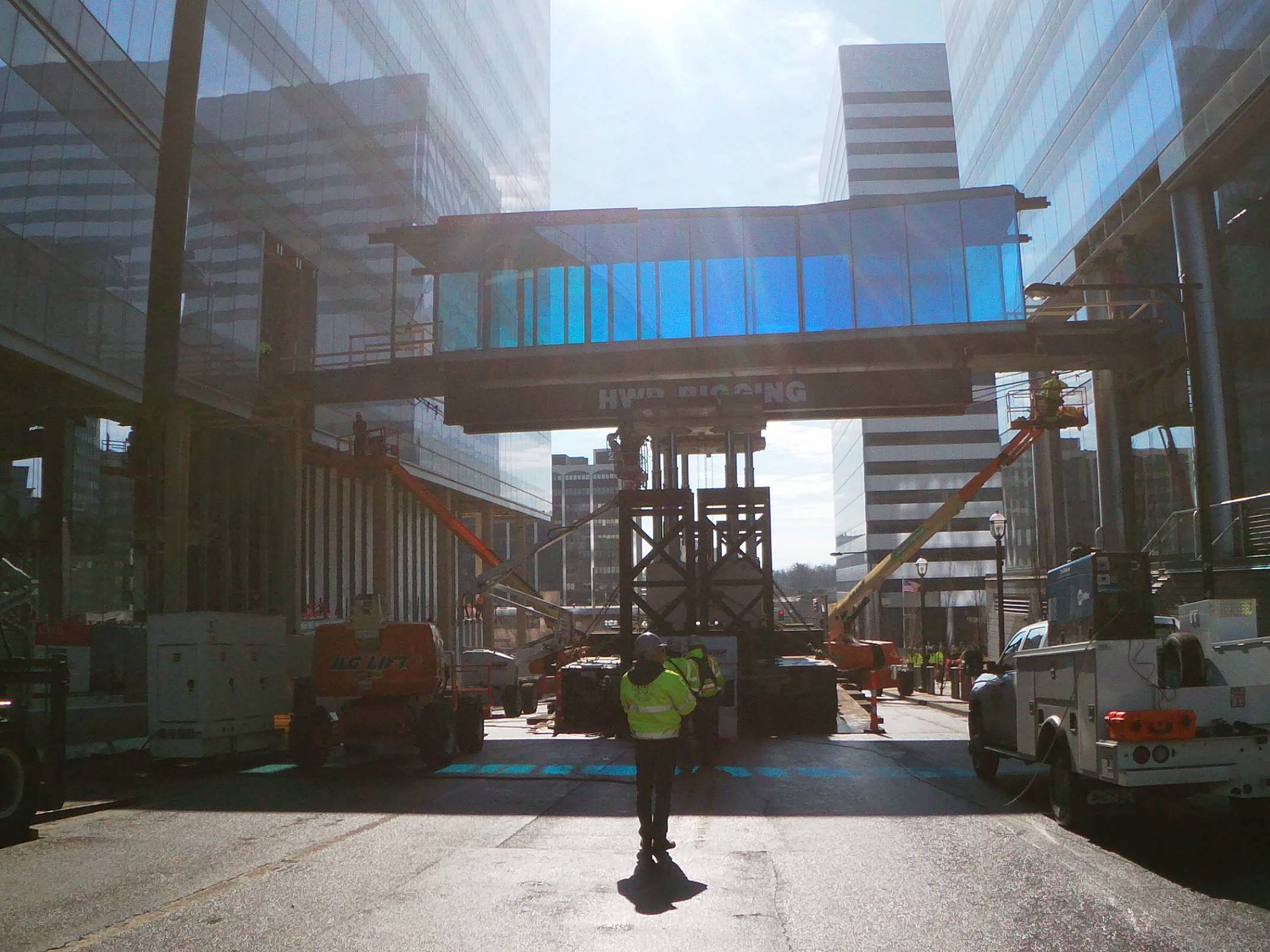 Its embrace of prefabrication allowed Clayco to build a bridge across a street in Missouri in a single day. Photo courtesy Clayco
Its embrace of prefabrication allowed Clayco to build a bridge across a street in Missouri in a single day. Photo courtesy Clayco
In June, the company combined its design businesses, Lamar Johnson Collaborative and BatesForum, providing Clayco with an integrated delivery model that Clark believes will “set a new standard.” Clark is looking ahead to see where else technology and better project management might give Clayco an edge.
He believes that modular construction will be required “on a mass scale” to counteract the industry’s aging workforce. Within three to seven years he expects robots to be doing more installation work.
ALSO SEE: Oracle’s replica of a construction jobsite creates an immersive environment for AEC professionals
Clark is a big proponent of BIM modeling and prefabrication. Last October, Clayco installed a bridge across a street in Clayton, Mo., in a single day by constructing the bridge’s steel-and-concrete components offsite. That delivery method saved local residents and businesses five months of impact on traffic.
For Pfizer’s 294,000-sf facility in Chesterfield, Mo., Clayco prefabricated the equivalent of two miles of lab walls, with conduit and pipe embedded.
Clark is also excited about artificial intelligence, albeit from a unique perspective of talent management to help employees map their careers and retirements. “We’re looking to build a talent management organization faster.”
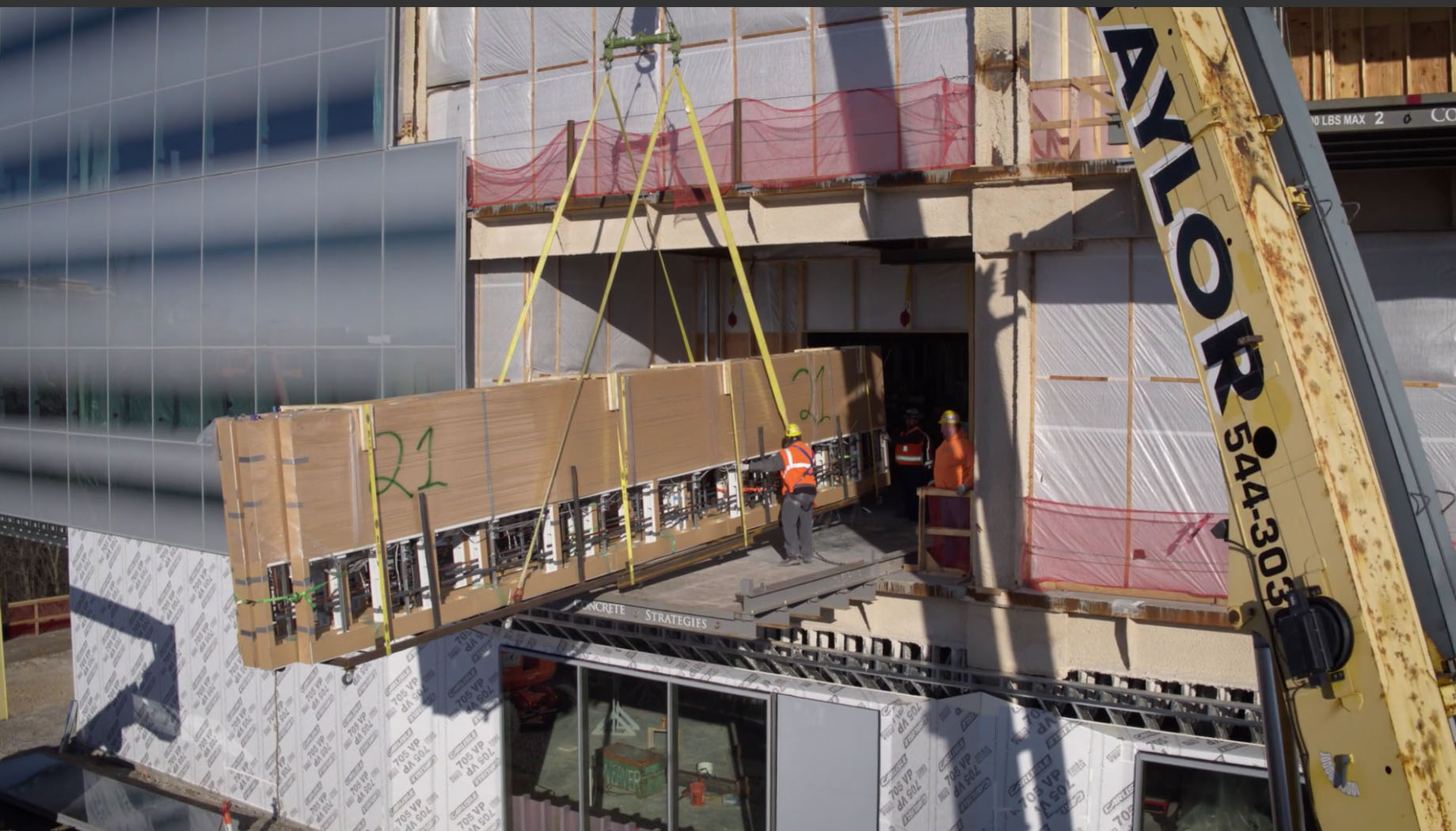
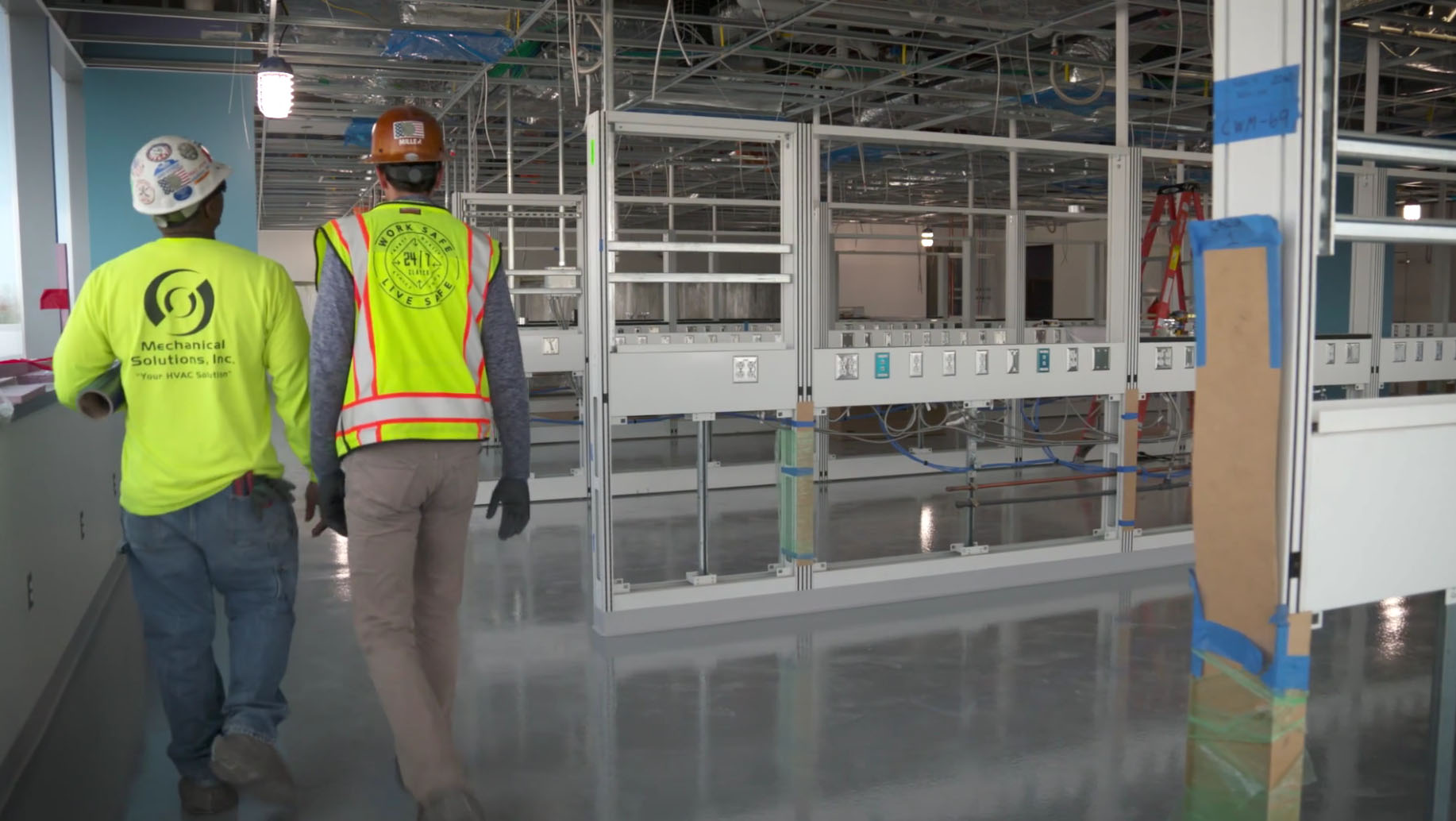
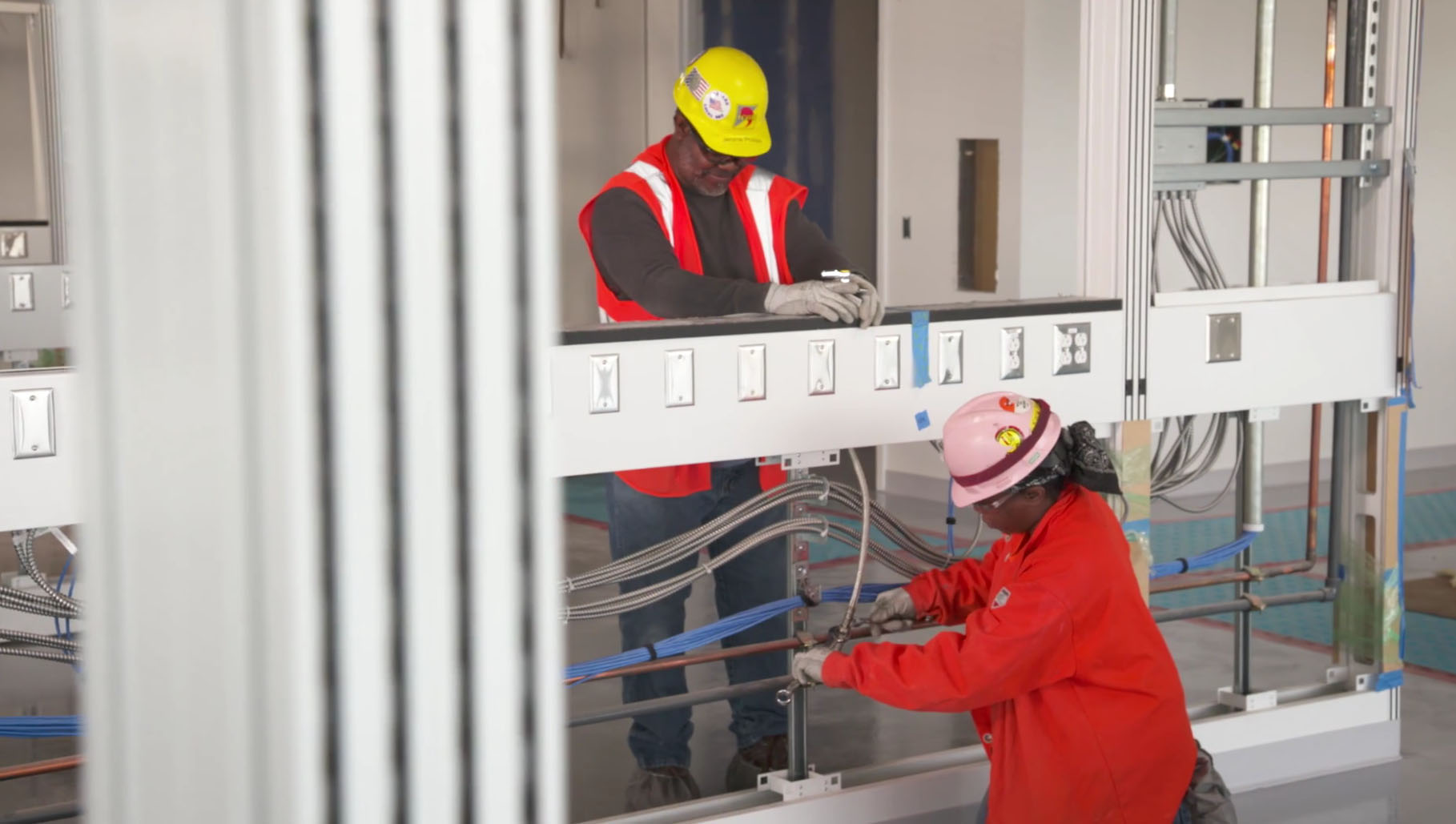 For Pfizer’s 294,000-sf facility in Chesterfield, Mo., Clayco prefabricated the equivalent of two miles of lab walls, with conduit and pipe embedded. Photo courtesy Clayco
For Pfizer’s 294,000-sf facility in Chesterfield, Mo., Clayco prefabricated the equivalent of two miles of lab walls, with conduit and pipe embedded. Photo courtesy Clayco
Related Stories
AEC Innovators | Mar 2, 2023
Turner Construction extends its ESG commitment to thwarting forced labor in its supply chain
Turner Construction joins a growing AEC industry movement, inspired by the Design for Freedom initiative, to eliminate forced labor and child labor from the production and distribution of building products.
Multifamily Housing | Mar 1, 2023
Multifamily construction startup Cassette takes a different approach to modular building
Prefabricated modular design and construction have made notable inroads into such sectors as industrial, residential, hospitality and, more recently, office and healthcare. But Dafna Kaplan thinks that what’s held back the modular building industry from even greater market penetration has been suppliers’ insistence that they do everything: design, manufacture, logistics, land prep, assembly, even onsite construction. Kaplan is CEO and Founder of Cassette, a Los Angeles-based modular building startup.
AEC Innovators | Feb 28, 2023
Meet the 'urban miner' who is rethinking how we deconstruct and reuse buildings
New Horizon Urban Mining, a demolition firm in the Netherlands, has hitched its business model to construction materials recycling. It's plan: deconstruct buildings and infrastructure and sell the building products for reuse in new construction. New Horizon and its Founder Michel Baars have been named 2023 AEC Innovators by Building Design+Construction editors.
AEC Tech | Jan 27, 2023
Key takeaways from Autodesk University 2022
Autodesk laid out its long-term vision to drive digital collaboration through cloud-based solutions and emphasized the importance of connecting people, processes and data.
AEC Tech Innovation | Jan 24, 2023
ConTech investment weathered last year’s shaky economy
Investment in construction technology (ConTech) hit $5.38 billion last year (less than a 1% falloff compared to 2021) from 228 deals, according to CEMEX Ventures’ estimates. The firm announced its top 50 construction technology startups of 2023.
AEC Tech Innovation | Jan 14, 2023
CES recognizes a Dutch firm’s wearable technology for construction management
The firm’s TokenMe product offers construction managers a real-time crowd- and asset-tracking solution via low-power, location-aware radio and RFID tags and multiple sensors through which data are processed with cloud-based artificial intelligence.
Digital Twin | Nov 21, 2022
An inside look at the airport industry's plan to develop a digital twin guidebook
Zoë Fisher, AIA explores how design strategies are changing the way we deliver and design projects in the post-pandemic world.
Giants 400 | Nov 14, 2022
4 emerging trends from BD+C's 2022 Giants 400 Report
Regenerative design, cognitive health, and jobsite robotics highlight the top trends from the 519 design and construction firms that participated in BD+C's 2022 Giants 400 Report.
Contractors | Nov 14, 2022
U.S. construction firms lean on technology to manage growth and weather the pandemic
In 2021, Gilbane Building Company and Nextera Robotics partnered in a joint venture to develop an artificial intelligence platform utilizing a fleet of autonomous mobile robots. The platform, dubbed Didge, is designed to automate construction management, maximize reliability and safety, and minimize operational costs. This was just one of myriad examples over the past 18 months of contractor giants turning to construction technology (ConTech) to gather jobsite data, manage workers and equipment, and smooth the construction process.
Architects | Nov 10, 2022
What’s new at 173 architecture firms for 2022
More than 295 U.S. architecture and architecture-engineering (AE) firms participated in BD+C's 2022 Giants 400 survey. As part of the Giants survey process, participating firms are asked to describe their most impactful firm innovations and noteworthy company moves in the past 12 months. Here is a collection of the most compelling business and project innovations and business moves from the 2022 Architecture Giants.


